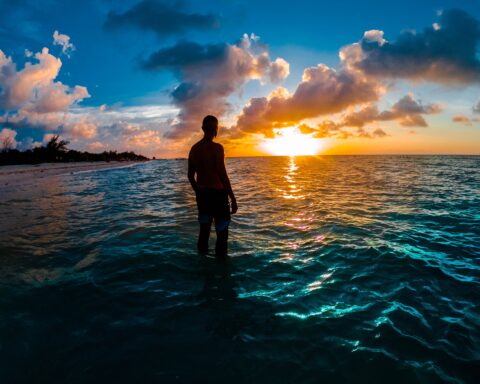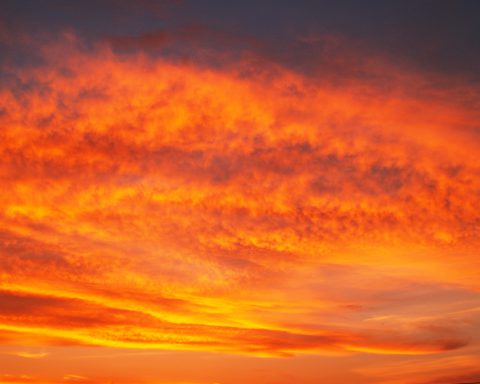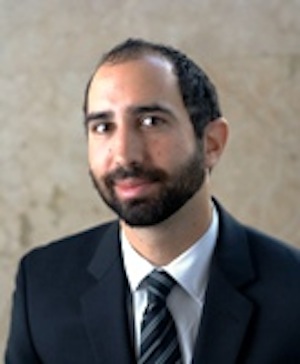The Ethical Dilemma of Invasive Species for a Christian Ecologist
By Jeffrey Reed View and Print as PDF.
View and Print as PDF.

The Ash Wednesday liturgy is among my favorites of the entire Christian calendar. That might seem odd given the somber, even morbid tone of the service. And yet I find the impartation of ashes that are ever so temporarily etched onto my forehead with the words, “Remember that you are dust, and to dust you will return,” comforting. Those words contained in ash remind me of my own mortality—and of how that mortality connects me with the rest of creation, with all things mortal. I will be dust. My neighbor, whom I am supposed to love and care for, will be dust. So too will my Labrador retriever, and the geese that wing their way over my home each spring and fall, be dust. The squirrels that fatten themselves on acorns, and the leaves that provide us with a stunning pallet of color each fall before blanketing my yard, will eventually be dust. So too will the seas of native prairie grasses and forbs; all will be dust. You will be dust as well; as part of the created order, we have a common denominator.
These words are a reminder, not only of our common mortality and connectedness, but also of the cyclical nature of creation. While the geese that fly over my rooftop this fall may not return next spring or the following fall, others most certainly will. The oaks in the back yard will drop their leaves and will again next year, just as the prairie grasses and forbs will put forth new sprouts next spring. Dust goes on living, and in doing so, each part of creation, each creature, is fulfilling the role that God intended.
As an ecologist, I am well aware of the connectedness of creation. I am also very aware of the life and death struggles that occur in creation each and every moment; the life of one creature is almost always dependent upon the death of another. I am also well aware of the tremendous damage that humanity has inflicted upon creation, even while I know just how resilient creation can be. As a theologian, I am well aware of the importance of each of God’s creatures, knowing that each has evolved in such a manner that it plays a vital role in the health and well being of the ecosystem of which it is part. Indeed, a diverse creation is a healthy creation. Declining biodiversity is an indication of disordered world, a created order that does not reflect God’s plan.
These two worlds of ecology and theology intersect more often than one might expect. I am an aquatic and fisheries biologist. I coordinate the State of Minnesota’s long-term ecological monitoring program for lakes. I am also a Christian, a Methodist, a theologian. These two worlds, therefore, are a part of my very identity. But sometimes these intersections provide me with a deep conundrum, particularly when it comes to invasive species. For example, you have likely heard about the burgeoning problem of invasive Asian carp in many of North America’s waterways, primarily large river systems. More likely you’ve seen the dramatic video footage of these large fish catapulting themselves airborne each time a boat passes by, sometimes causing harm to the occupants of the watercraft. These fish don’t belong here and their presence is upsetting the health and wellbeing of a created order that has taken millennia to evolve to its present state; diversity of the ecosystems in which these fish become established is truly threatened. The conundrum then, from an eco-theological perspective is: How do we respond when one of God’s creation directly threatens another? More specifically, such as is the case with Asian carp, how do we respond when one of God’s Creation is ‘out of place’ and the resulting disorder could cause the decline or extirpation of another of God’s creatures?
A common, knee-jerk response is often an attempt to exterminate the invader. Yet if we are to consider all of creation a manifestation of God in the world, is that an appropriate response for Christians? Furthermore, should we take into consideration that an invading species is merely exhibiting its “creatureliness,” fulfilling its role in creation, albeit in a foreign ecosystem? After all, these species are not intentionally or maliciously destroying an ecosystem. They are only here because of our own greedy sinfulness. And if we’re honest with ourselves, there probably are no guaranteed solutions to the problem. Eradication efforts rarely work, are costly, and some can even inadvertently hurt indigenous species. So, we may ask, what option then does that leave us?
Because eradication rarely works, control is often a better option. For some species, such as the Asian carps, harvesting them from the wild for food is a very viable option that allows for some population control, provides an important source of protein for a hungry world, and yet allows these fish to fulfill the “creatureliness” that was intended. However, many other invasive species are not edible and it is difficult to imagine a utilitarian function for them. For these species, I am not sure what the answer is. Though, frankly, it is reasonable to question whether or not we should even be assigning a function to God’s creation.
But I believe that if we begin by recalling our relationship with creation and with God, we are on the right path. If we treat life, all life, as a sacred gift from our Creator, we will pause and carefully consider what a large-scale eradication program might entail. That is not to say we sit idly by and watch an ecosystem disappear. It is, though, to say that we should raise a perspective that rarely enters into the conversation when decisions about resource management are made. Creation, all of creation, needs a voice. As people of faith, it is our role to provide that voice. Even in a setting dominated by scientists who are often skeptical or even dismissive of faith, I feel a calling to provide that voice, even if I do get more than a few strange glances. We can all be that voice. And if we create an atmosphere that requires us to be intentional in our management decisions, we can also be respectful and responsible to creation in our responses.
When we lift up these voices and walk this earth with ashes fixed on our foreheads, we signal our deep and inviolable connectedness with all mortal creation. The ethical dilemma is not resolved. But at least, we will have raised it.
Read more articles like this one in the Nov 2012–Jan 2013 issue, “Hope for Eco-Activists: Discovering an Environmental Faith“
Jeff Reed is a fisheries biologist living amongst Minnesota’s 10,000 lakes where he and his family enjoy fishing and exploring creation. He is particularly drawn to the ‘thinness’ and vastness of Minnesota’s prairie. A candidate for ordination in the UMC, he holds advanced degrees in Liturgy and Scripture from St. John’s University. His view on sustainability and ecology has been greatly influenced by the long-term vision the Benedictine monks of St. John’s Abby have for their small corner of God’s creation.






Unbound Social